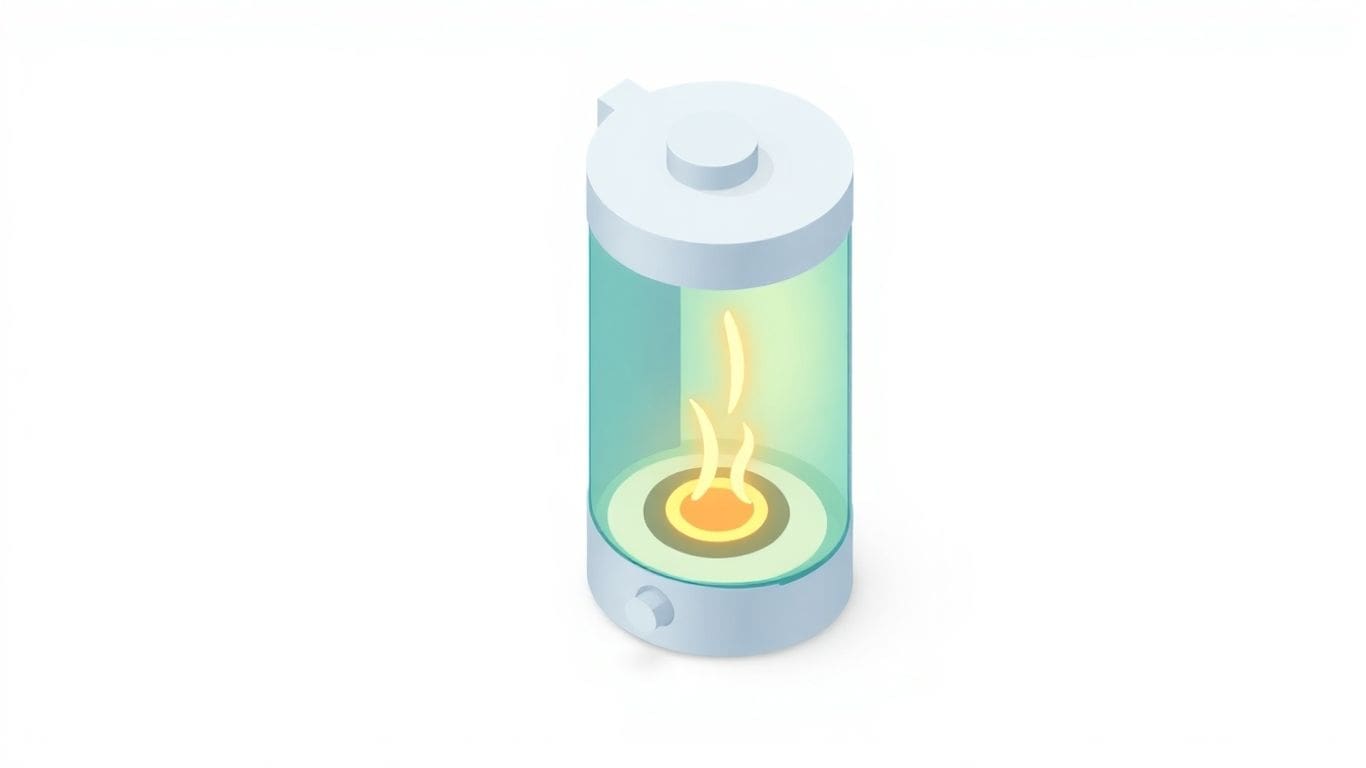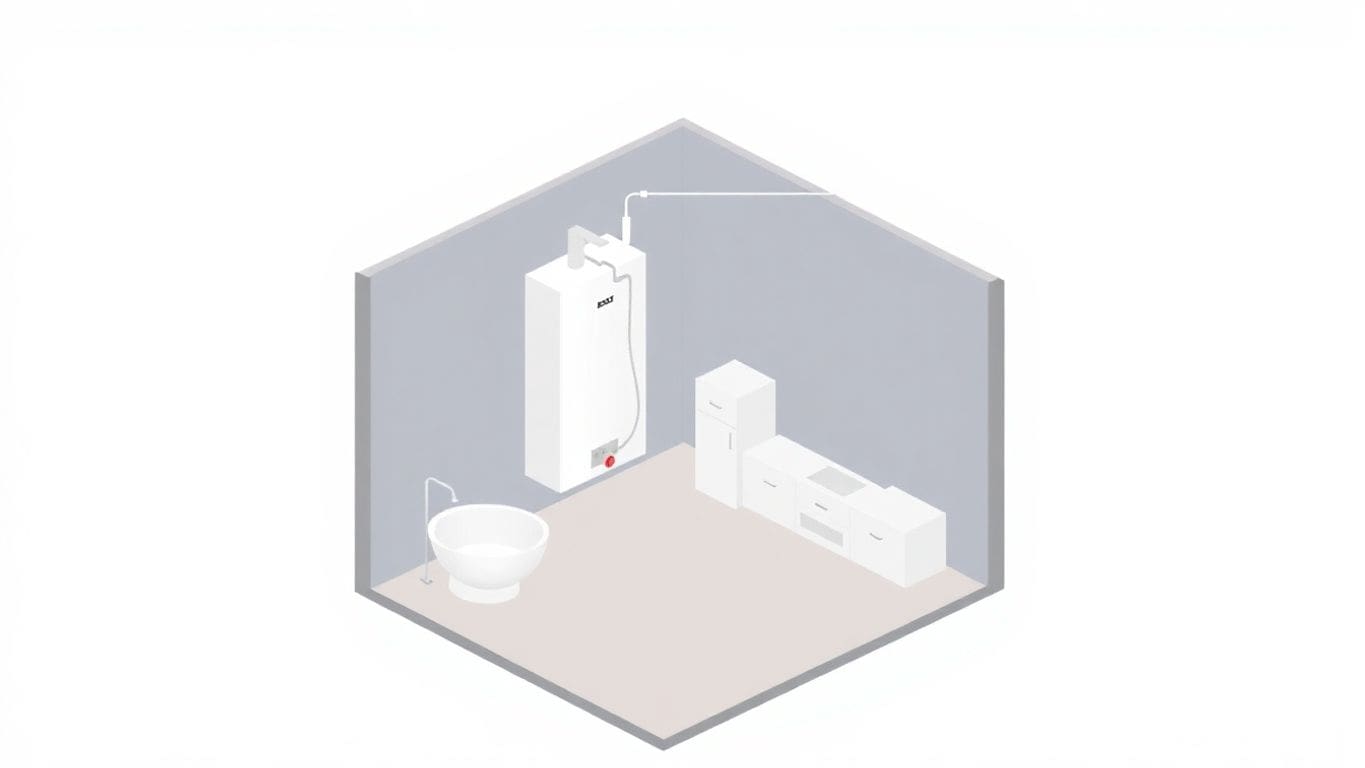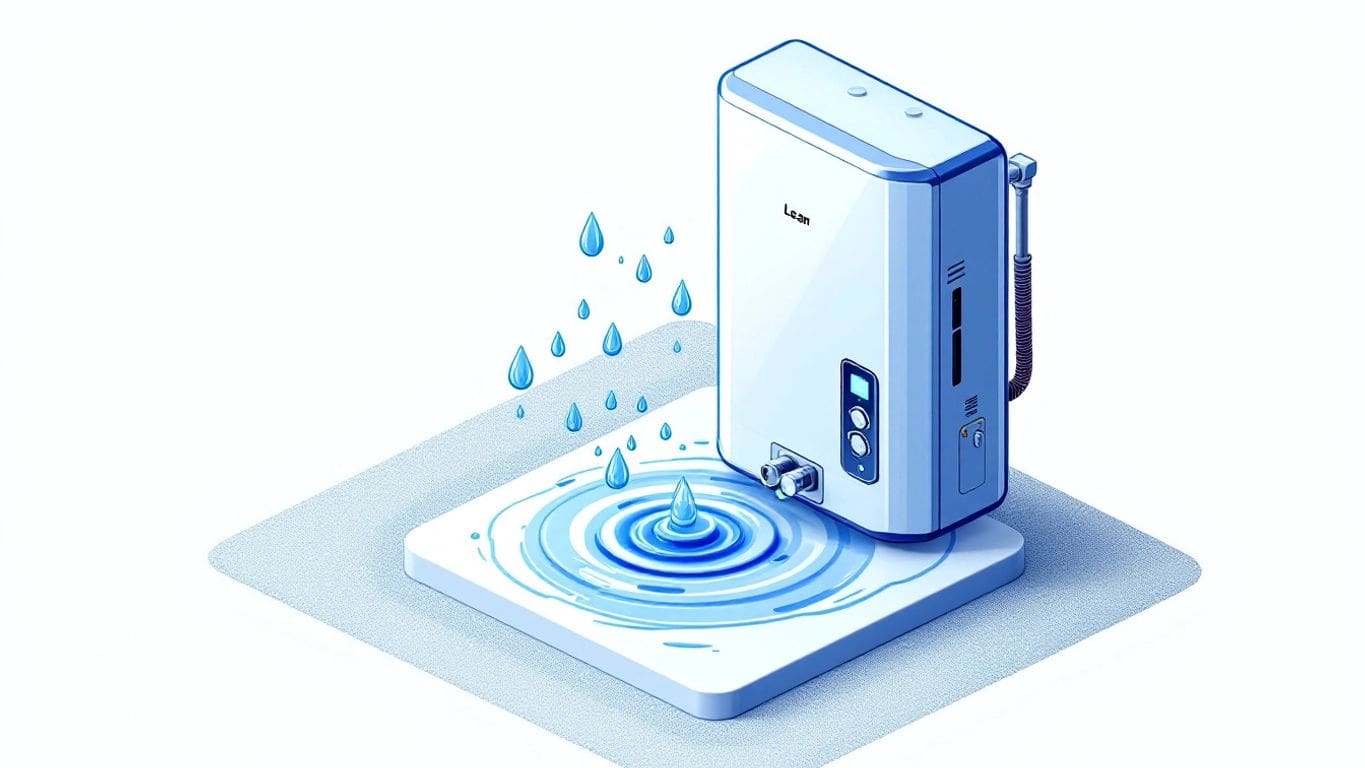
If you’re a homeowner, knowing how to check water heater problems can save you time, money, and a lot of frustration. Water heaters can be tricky devices, and when they start acting up, it can throw a wrench in your daily routine. Luckily, with some basic troubleshooting skills, you can often identify and even fix common issues without needing to call a plumber. This guide will walk you through the steps to diagnose and address typical water heater problems, helping you keep your hot water flowing smoothly.
Before you start checking for problems, it’s good to know how your water heater works. It’s not rocket science, I promise! Knowing the parts and types can really help you figure out what’s going wrong.
Think of your water heater like a simple machine. It has a few main parts that all work together. Here’s the breakdown:
Knowing these parts will make it easier to understand what might be causing problems later on.
There are two main types of water heaters you’ll find in most homes:
Here’s a simple explanation of how a tank water heater works:
The anode rod protects the tank from corrosion. Over time, sediment can build up in the tank, making it less efficient. That’s why flushing your water heater is important!
It’s a bummer when your water heater acts up. No one likes a cold shower! Luckily, there are usually signs that something is wrong before it completely quits. Knowing what to look for can save you from bigger problems later. Let’s check out some common signs of water heater trouble.
Is your water heater making weird sounds? Strange noises like rumbling, popping, or banging are often a sign of sediment buildup. Sediment happens when minerals in the water settle at the bottom of the tank. This can cause the heater to work harder and less efficiently.
Sediment buildup can also cause the heating element to overheat, which can lead to premature failure. Flushing your water heater regularly can help prevent this issue.
Have you noticed that your shower water is sometimes hot and sometimes cold? This could mean your water heater isn’t working right. Inconsistent water temperature is a common sign of a problem. It could be a faulty thermostat, a bad heating element, or even a problem with the gas supply (if you have a gas water heater). If the water isn’t consistently hot, it’s time to investigate. You might need to adjust the thermostat settings or call a pro.
If your hot water looks rusty or smells bad, that’s a definite red flag. Rusty water can mean there’s corrosion inside the tank. A bad smell can be caused by bacteria in the tank. Neither of these are good! If you see discolored water or smell something funky, it’s time to take action. Here’s what to do:
If your water isn’t getting hot, the first thing to check is the power supply. It’s like when your phone won’t turn on – you check if it’s plugged in, right? Same idea here. Let’s make sure your water heater is getting the juice it needs.
First, head over to your circuit breaker box. It’s usually in the basement, garage, or a utility closet. Look for the breaker that’s labeled for your water heater. If the breaker is tripped (meaning it’s in the "off" position or in the middle), flip it all the way to "off" and then back to "on". This resets the breaker. Sometimes, a tripped breaker is an easy fix! If it trips again right away, there might be a bigger problem, like a short circuit. You might need to call an electrician then.
Okay, so the breaker is fine. Now, let’s check the power connections at the water heater itself. But before you do anything, turn off the power at the breaker! Safety first! Once the power is off, look for any loose or corroded wires. If you see anything that looks off, like a wire that’s not connected tightly or has some green stuff on it (that’s corrosion), you might need to tighten the connection or clean it up. If you’re not comfortable working with electricity, it’s best to call a professional. Messing with electricity can be dangerous.
If you have a gas water heater, the power supply is a little different. Instead of electricity, it uses gas. So, you’ll want to make sure the gas is turned on. Check the gas valve near the water heater. It should be in the "on" position. If it’s off, turn it on. Also, make sure you have gas service! If other gas appliances in your house aren’t working either, there might be a problem with your gas company. If you smell gas, get out of the house and call the gas company right away! Gas leaks are serious. If the gas supply is fine, but the water heater still isn’t working, the gas control valve might be faulty. That’s a job for a professional.
Your water heater’s thermostat is super important. It keeps your water at the right temperature. If your water isn’t hot enough, or it’s way too hot, the thermostat might be the problem. Let’s check it out.
First, find the thermostat on your water heater. It’s usually behind a cover panel. Before you touch anything, turn off the power to the water heater at the circuit breaker. This is super important for safety! Remove the cover and you’ll see the thermostat. It looks like a dial or a small box with numbers on it. Use a screwdriver to adjust the temperature. Most people like it around 120 degrees Fahrenheit. Don’t go too high, or you could burn yourself. Wait a few hours after adjusting it, then check the water temperature again.
How do you know if your thermostat is bad? Here are some clues:
If you see these signs, the thermostat might need to be replaced. Sometimes, a faulty thermostat can even cause strange noises from your water heater.
Sometimes, dirt and dust can mess with the thermostat. Turn off the power first! Then, use a soft brush or cloth to gently clean around the thermostat. Be careful not to move any wires. Make sure everything is dry before you put the cover back on and turn the power back on. Cleaning around the thermostat can help it work better and last longer.
If you’re not comfortable working with electricity, it’s always best to call a professional. Water heaters can be dangerous if you don’t know what you’re doing. It’s better to be safe than sorry!
Your water heater’s heating element is super important. It’s what actually heats the water! If it’s not working right, you’ll notice problems. Let’s check it out.
First, know what kind of heater you have. Electric heaters use electric heating elements directly in the tank. Gas heaters use a burner at the bottom to heat the tank. If you have a gas heater, you won’t have an electric heating element to check. This section is mainly for electric water heaters. If you’re unsure, check your owner’s manual or look for electrical connections on your heater.
How do you know if your heating element is bad? Here are some common signs:
If you notice any of these signs, it’s time to inspect the heating element. Don’t ignore these problems, or they could get worse.
If your heating element is bad, you can replace it yourself. Here’s how:
Replacing a heating element is a pretty easy job, but if you’re not comfortable working with electricity, call a professional. It’s always better to be safe than sorry. Also, make sure you buy the right heating element for your water heater model. Check your owner’s manual for the correct part number.
Over time, sediment can build up in your water heater. This happens because water contains minerals. When the water is heated, these minerals separate and settle at the bottom of the tank. Think of it like the stuff that settles at the bottom of a tea kettle. This sediment can cause problems, making your water heater work harder and less efficiently. It can also lead to strange noises and even damage the tank.
Flushing your water heater is like giving it a good cleaning. It helps remove the sediment that has built up inside. Here’s how you can do it:
Flushing your water heater can seem like a big task, but it’s worth it. It can extend the life of your water heater and save you money on energy bills.
You should flush your water heater at least once a year. If you have hard water, you might need to do it more often. Hard water has more minerals in it, which means more sediment buildup. Check your water heater’s manual for specific recommendations. Regular flushing helps keep your water heater running smoothly and prevents problems down the road.
The anode rod is a key part of your water heater. It helps prevent rust and corrosion inside the tank. Over time, the anode rod wears down as it protects the tank. Checking it regularly can help you avoid bigger problems later.
An anode rod is a metal rod inside your water heater tank. It’s usually made of aluminum, magnesium, or zinc. Its main job is to attract corrosive elements in the water, so they attack the rod instead of the tank. This protects the tank from rusting. Think of it as a sacrificial part – it corrodes so the tank doesn’t.
How do you know if your anode rod is worn out? Here are some signs to look for:
Replacing the anode rod isn’t too hard, but you need to be careful. Here’s a quick guide:
Replacing your anode rod can extend the life of your water heater. It’s a simple fix that can save you money in the long run. Check it every few years to keep your water heater running smoothly.
It’s super important to check your water heater for leaks and damage. Catching problems early can save you from big headaches and costly repairs later on. Plus, a leaky water heater can waste a lot of water and energy, which nobody wants.
First, look around the base of the water heater for any signs of water. Even a small puddle can mean there’s a leak. Check these spots:
Give your water heater a good once-over. Use a flashlight to get a better look in dark areas. Here’s what to look for:
I remember one time, I ignored a small leak for months. I thought, "It’s just a little water, no big deal." Well, it turned into a HUGE deal when the tank finally gave out and flooded my basement. Trust me, it’s not worth the risk. Check for leaks regularly!
Sometimes, you can fix small problems yourself. But other times, it’s best to call a plumber. Here are some signs you need expert help:
It’s a good idea to have your water heater checked by a plumber every year or two, just to be safe. They can spot problems you might miss and keep your water heater running smoothly.

Taking care of your water heater regularly can help it last longer and work better. It might seem like a chore, but it’s worth it to avoid big problems later. Think of it like taking your car in for an oil change. It keeps things running smoothly.
Making a schedule is a great way to remember to do important tasks. Write down when you should flush the tank, check the anode rod, and inspect for leaks. Put it on your calendar or set reminders on your phone. A simple schedule can save you from unexpected issues.
Here’s a basic example:
| Task | Frequency |
|---|---|
| Flush the tank | Every year |
| Inspect anode rod | Every 2-3 years |
| Check for leaks | Every 6 months |
There are a few key things you should do regularly:
Doing these tasks will keep your water heater in good shape and help you avoid costly repairs. It’s like giving your water heater a check-up to make sure everything is working as it should.
Regular maintenance has many benefits:
By taking a little time to maintain your water heater, you can save yourself a lot of headaches and money in the long run. It’s a small investment that pays off big time.
Sometimes, fixing your water heater yourself isn’t the best idea. There are times when it’s safer and smarter to call a professional plumber. Don’t worry, it’s not admitting defeat! It’s about keeping you and your home safe.
Calling a professional plumber can save you time, stress, and money in the long run. They have the tools and knowledge to fix problems safely and correctly. Plus, they can spot potential problems before they become big issues.
Sometimes, you can fix small water heater problems yourself. But always be careful! If you’re not sure about something, it’s best to call a professional. Water and electricity can be dangerous.
Here’s a list of tools you might need for simple water heater repairs:
Remember, if you’re not comfortable doing a repair yourself, it’s always best to call a professional. It’s better to be safe than sorry!

Water heaters don’t last forever. Knowing how long yours should last can help you plan for a replacement. The average lifespan depends on the type of water heater you have. Tank-style heaters usually last about 10 to 15 years. Tankless models, if you take care of them, can go for 20 years or even longer. Regular maintenance is key to getting the most out of your water heater.
It’s not always easy to tell when your water heater is on its last leg. Here are some signs to watch out for:
Several things can affect how long your water heater lasts. Here are a few:
Taking good care of your water heater can really pay off. Simple things like flushing it once a year and checking the anode rod can add years to its life. It’s a small investment of time that can save you a lot of money in the long run.
You can check if your water heater is gas or electric by looking at its fuel source. If there are gas pipes connected to it, then it’s a gas heater. If you see electrical wires, it’s electric.
If you smell gas, leave the area immediately and call your gas company or emergency services. Do not try to fix anything yourself.
You can do some simple repairs yourself, like adjusting the thermostat or flushing the tank. But for serious issues, it’s best to call a plumber.
You should flush your water heater at least once a year to remove sediment buildup and keep it running smoothly.
Signs include strange noises, inconsistent water temperature, or water discoloration. If you notice these, it might be time for a check-up.
Most water heaters last about 8 to 12 years, but this can vary based on the type and how well it’s maintained.
An anode rod helps prevent rust inside the tank. It’s important because it can extend the life of your water heater.
If your heater is over 10 years old and often has problems, or if it leaks, it might be time to replace it.



